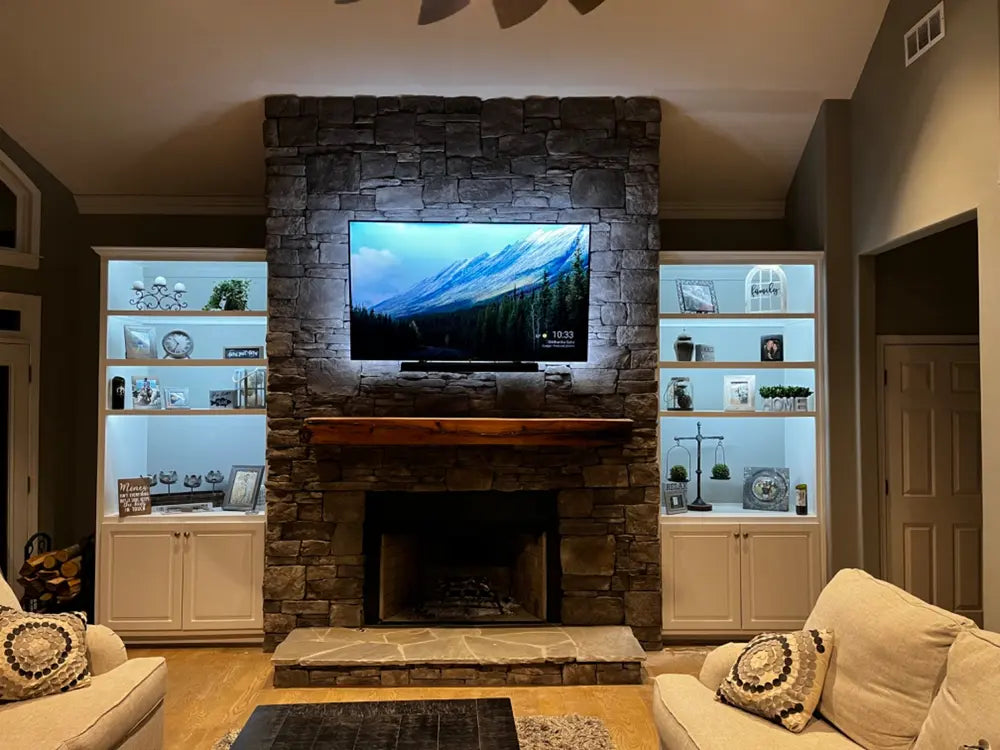Industry Standard Bias Lighting
Industry Standard Bias Lighting
MediaLight & LX1 Length Calculator
Please select the appropriate options below to determine the correct size bias lighting for your displays
What is the aspect ratio of the display?
What is the size of the display (This is the length of its diagonal measurement)
inches
Do you want to place the lights on 3 or 4 sides of the display (Read our recommendation on this page MediaLight & LX1 Length Calculator if you are having trouble deciding).
This is the actual length that is required:
You should round up to this size bias light (you can round down at your discretion if the actual and rounded measurements are very close. It is usually better to have more than too little):

Televisions have come a long way in recent years, boasting increasingly accurate color settings that promise to deliver a true-to-life visual experience. In fact, many TVs have accurate color settings right out of the box.
But did you know that the key to making the most of your TV's picture-perfect display lies in the ambient lighting around it? In this article, we'll dive into the fascinating world of chromatic adaptation, explaining how it affects your binge-watching sessions, and why accurate ambient lighting (hello, bias lighting!) is more important than ever.
The Colorful World of Chromatic Adaptation
Let's start with a quick science lesson. Chromatic adaptation is your eyes' incredible ability to adjust to different light sources, ensuring that you perceive colors consistently across various environments. In layman's terms, it's what allows you to see the same shade of red on an apple, whether you're indoors or outside in the sunshine.
However, when it comes to watching TV, chromatic adaptation can be a bit of a double-edged sword. You see, if your room's ambient lighting is off, your eyes can "adapt" in a way that makes the colors on your screen look unnatural. Unlike the apple in the previous example, the display is transmissive and it does not reflect the light in the room.
It's why your phone's screen looks bluer under low-temperature incandescent lights and why low quality LED strips with a blue/magenta cast will make skin tones look yellow and sickly on your TV. That's where accurate ambient lighting comes in, saving the day (and your favorite show's color balance!).
Setting the Stage: Accurate Ambient Lighting
To make sure you're getting the most out of your TV's color settings, it's crucial to pay attention to the lighting in your viewing environment. And the star of the show? Bias lighting.
Bias lighting is a soft, uniform light source that you place behind your TV or monitor. Its main goal is to reduce eye strain during long viewing sessions, but it also helps maintain your screen's color accuracy by minimizing the effects of chromatic adaptation. To make sure your bias lighting is doing its job, choose a light source with a color temperature of 6500K (D65), the industry-standard color temperature.
Besides bias lighting, there are a few other tricks to creating a top-notch TV-watching space. Here's what you can do:
The (Light) Source of the Problem
While the color of your walls does play a role in your viewing experience, it's not as influential as the color of your light source. A perfectly calibrated TV can be thrown off by inaccurate lighting, so it's essential to prioritize the color of your light source when setting up your space. Here's how:
Conclusion
As TV technology continues to advance, it's crucial to pay attention to the ambient lighting around your screen. By understanding the role of chromatic adaptation and taking steps to create the ideal viewing environment, you'll be able to enjoy your favorite shows and movies as they were meant to be seen. So grab the popcorn, dim the lights, and get ready to enjoy a top-notch viewing experience!
More Tips and Tricks for Your Ultimate Viewing Setup
While we've covered the essential aspects of creating the perfect environment for your TV-watching escapades, here are a few bonus tips to help you elevate your viewing experience even further:
With your newfound knowledge of chromatic adaptation, accurate ambient lighting, and the essential elements of a well-designed viewing environment, you're all set to transform your TV room into a true home theater experience. So, gather your friends and family, dim those bias lights, and get ready to embark on a visual journey like never before!